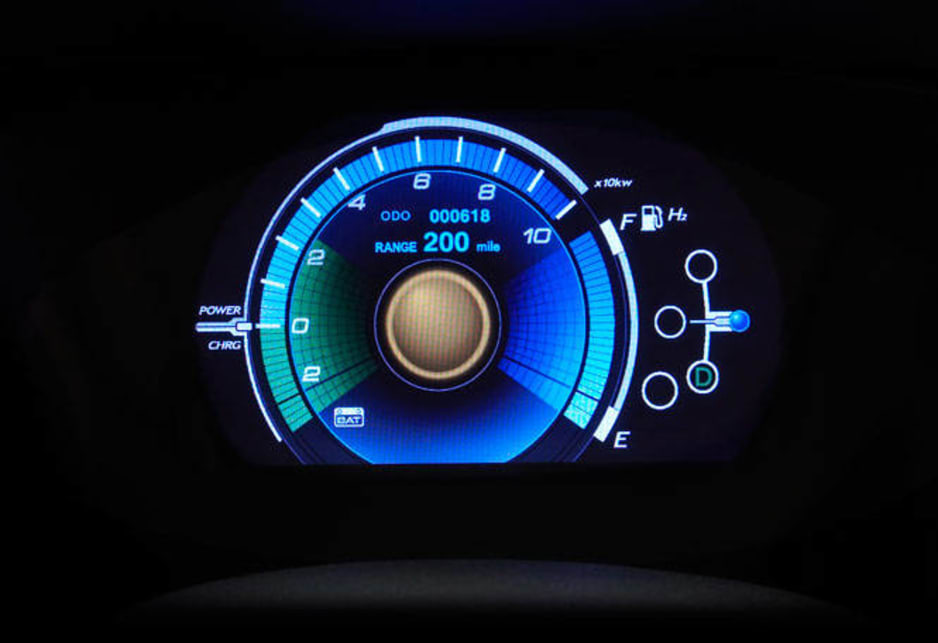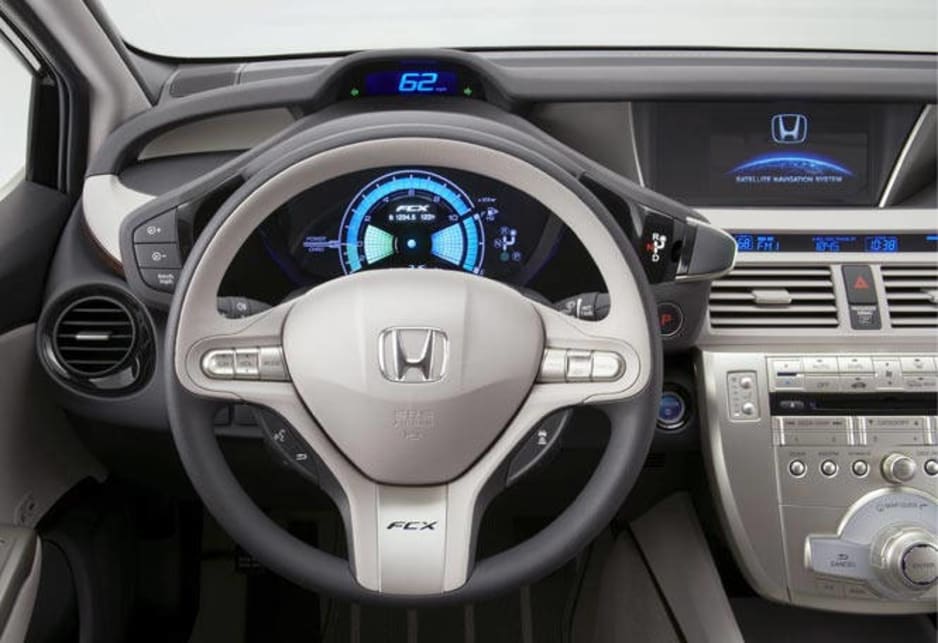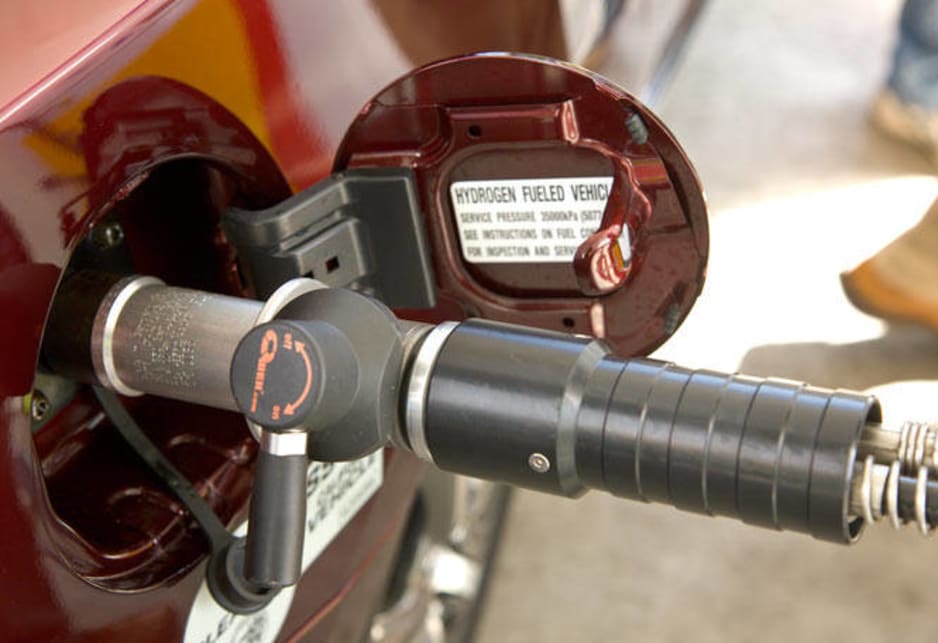
Honda Clarity review
If hybrid technology is the road to the future, the fuel cell may well be the destination.
Carsguide was given a peek into that future with a drive of one of the world's most exclusive vehicles, Honda's Clarity sedan, in America's green heartland. There are only 10 examples of the Clarity among the millions of cars that play the daily commute game in Los Angeles and a handful of others undergoing similar real-world trials in Japan.
"We believe hydrogen (fuel cell) is the ultimate answer to the need to produce more efficient, less polluting transport," Honda America environment and safety specialist spokesman Todd Mittleman says. "There are a lot of different approaches to the future but ultimately we see fuel cell technology as the end game."
One of the keys to the fuel cell program for Honda was to get cars out into the daily grind. Some of those pioneer cars have gone to high-profile celebrities such as actress Jamie Lee Curtis but others sit in the garages of ordinary people, including a Los Angeles District Attorney and a high school principal.
"We didn't just want celebrities," Mittleman explains. "What we want is real feedback from real people on what it is like to live with a fuel cell vehicle. In terms of numbers, hybrid electric vehicles are here for a long time and will become an increasing percentage of the cars on the road. Fuel cell vehicles are a much longer-term program and we are looking at a 20 year span before they are available in significant numbers."
Price
Honda won't acknowledge a price for a Clarity — some estimates put it at as much as $2 million a unit — and the company has set a 2018 target for being able to sell an unsubsidised varient of the technology. In the interim any Los Angeles citizen can apply through the Honda website to be considered for leasing a Clarity.
The cost to the participants is $US600 a month which, according to Mittleman, does not reflect the cost of vehicles but does include insurance and maintenance.
Driving
Behind the wheel of the Clarity is an interesting place to be. The dash and controls are a mix of the familiar and science fair. Hydrogen use is monitored by a glowing ball in the middle of the dash which keeps the driver updated on how efficiently they are performing by changing from a good-on-ya blue to lift-your-game orange.
Driving is eerily quiet from the car's electric motor which drives the front wheels using electricity generated on board by the fuel cell stack and stored in a highly-efficient and compact lithium-ion battery. While the technology is breathtaking the most amazing thing about the Clarity is that it is a wonderful drive experience. Ride is excellent, the electrically assisted steering is amongst the best of its type we have experienced, the immediate get-up-and-go characteristics of the electric motor give the car a truly sporty feel and the interior is a pleasant and spacious place to be for any of the four passengers.
Hydrogen system
The Clarity's fuel tank, where the hydrogen is stored compressed to 5000psi (the equivalent of 340 atmospheres), holds 4kg of the gas at a cost of $US5 per kilogram for a range of 240 miles (400kms). That pressure, down from more than three times that in the early fuel cell models, makes the hydrogen more manageable and easier to contain without seepage loss from the tank.
"It was really important that the Clarity could be related to by people who enjoyed driving cars," Mittleman says. "It had to connect." The huge improvements over the past decade in packaging and energy density of fuel cells, batteries and electric motors have all given designers far greater freedom to bring the vehicles into the real world.
In Honda's case the fuel cell has gone from a 60kW unit weighing 202kg and eating up 134 litres of space to today's 67kg unit compacted into 52 litres with an output of 120kW. One of the biggest challenges still facing fuel cell expansion is the infrastructure to deliver compressed hydrogen at a point of sale and the production of the hydrogen itself.
Infrastructure
Currently there are 16 hydrogen fuel outlets in Southern California but most of those are in truck and transport hubs where commercial hydrogen-powered internal combustion engine driven trucks and buses refuel. "That environment is far too dangerous for a normal car owner so we are working with fuel companies to install hydrogen filler points in normal gas stations. It is slow but it is happening."
While hydrogen is the most common element on earth, harvesting it is an energy intensive exercise and it is the green credentials of that energy that provides anti-fuel cell lobbyists with their greatest ammunition.
"A well to wheel calculation of green house gas for different fuel technology still has hydrogen as a viable option," Mittleman says. "For a midsize electric vehicle the score is around 278, or 161 on the California grid which uses more renewable sources of electricity, for a mid-sized hybrid it is 248 and a Clarity is 158 or 147 on a California rating."
That fuel cell score could drop to an effective zero if the hydrogen production was from totally renewable sources such as solar or bio-mass.
"Honda, Toyota, Daimler, Hyundai, GM ... we are all travelling down the fuel cell path," Mittleman says. "The development programs are all independent, but we are working as a body on the infrastructure questions."
On the way to a long-term solution, Mittleman says, there are companies working on more than one approach with programs in biofuels, clean diesel, compressed natural gas, improvements in internal combustion engines, downsizing, hybrids, plug-in hybrids and full electric vehicles. However, while each of the approaches has merits Honda and the fuel cell faithful can see only one solution that ticks all the boxes.
















